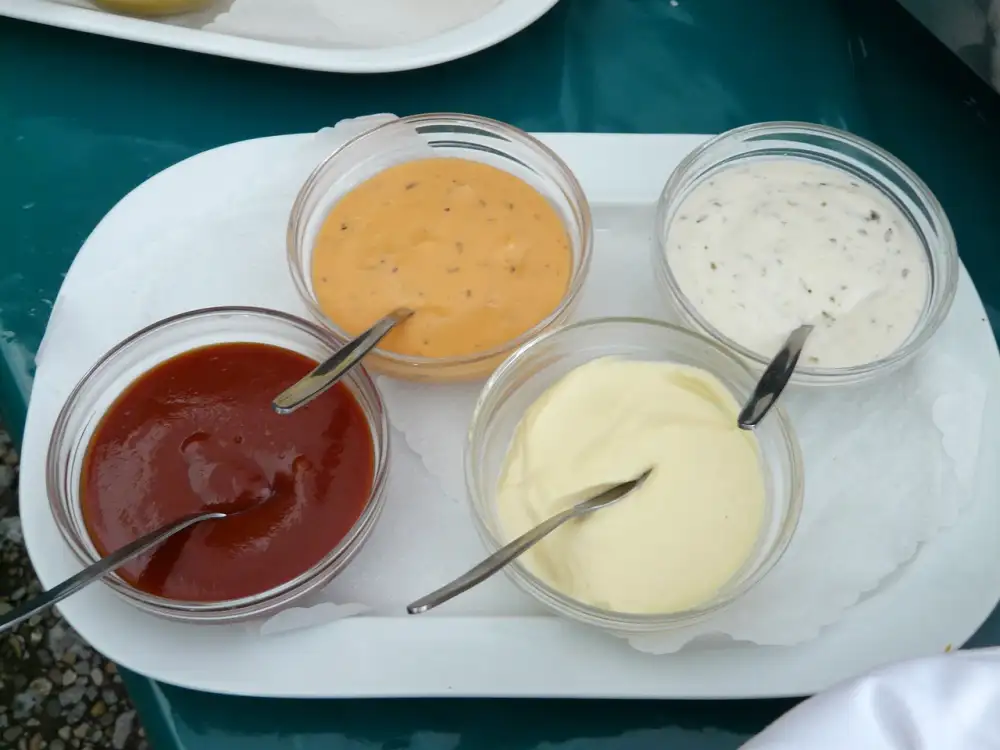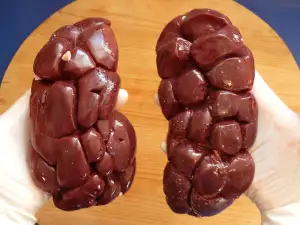Master the Art of Homemade Mayonnaise: Unveiling the Secrets to Creating Creamy Perfection

Mayonnaise, a creamy and versatile condiment, is a staple in many kitchens around the world. While store-bought mayonnaise is readily available, there's something special about making your own homemade version. Not only does it allow you to control the ingredients and flavors, but it also gives you the satisfaction of creating something from scratch.
Homemade mayonnaise is incredibly easy to make and requires just a few simple ingredients. With a little practice and some insider tips, you can master the art of creating creamy perfection right in your own kitchen. So put on your apron and get ready to embark on a culinary adventure as we unveil the secrets behind homemade mayonnaise.
Gather the Ingredients
Before embarking on your homemade mayonnaise journey, make sure you have all the necessary ingredients at hand. You will need 2 egg yolks, 1 tablespoon of vinegar or lemon juice, 1 cup of vegetable oil, salt to taste, and a teaspoon of mustard. These simple yet essential ingredients are the building blocks for creating a creamy and delicious mayonnaise that will elevate any dish. So gather them all together and let's get started on this culinary adventure!
Prepare the Egg Yolks
To prepare the egg yolks for homemade mayonnaise, start by separating the yolks from the whites. Carefully crack the eggs and gently transfer the yolks to a clean bowl, making sure to avoid any contact with the egg whites. It's important to use fresh eggs for the best results.
Once you have separated the yolks, whisk them vigorously until they become smooth and creamy in texture. This step is crucial as it helps emulsify the ingredients later on. You can use a hand whisk or an electric mixer for this process.
Some recipes call for adding a pinch of salt or sugar to enhance the flavor of the mayonnaise. However, this step is optional and depends on personal preference. If you choose to add salt or sugar, now is the time to do so. Gently mix it into the egg yolks until well incorporated.
Preparing the egg yolks properly sets a solid foundation for creating a rich and velvety homemade mayonnaise. So take your time and ensure that they are well beaten before moving on to the next step in this delightful culinary adventure.
Add the Vinegar or Lemon Juice
Once you have prepared the egg yolks, it's time to add the vinegar or lemon juice to give your homemade mayonnaise that tangy flavor. Both vinegar and lemon juice work well in this recipe, so choose whichever you prefer or have on hand.
For a classic mayonnaise taste, use white wine vinegar or distilled white vinegar. These vinegars have a milder flavor that won't overpower the other ingredients. If you want a slightly more citrusy taste, opt for freshly squeezed lemon juice. The acidity from the vinegar or lemon juice will also help to stabilize the emulsion and prevent separation.
To add the vinegar or lemon juice, start by whisking it into the egg yolks until well combined. This step is crucial as it helps to create a stable base for your mayonnaise. Make sure to whisk continuously to prevent any lumps from forming.
The amount of vinegar or lemon juice needed will depend on your personal preference and the desired level of tanginess. Start with a small amount, such as 1 teaspoon, and gradually increase if desired. Remember that you can always add more later but cannot take it away once it's added.
Adding the vinegar or lemon juice at this stage allows it to fully incorporate into the egg yolk mixture before adding the oil. This ensures that all the flavors meld together seamlessly for a delicious homemade mayonnaise.
Now that you've added the vinegar or lemon juice, it's time to move on to slowly incorporating the oil into your homemade mayonnaise masterpiece.
Slowly Incorporate the Oil
Slowly incorporating the oil is a crucial step in achieving the perfect texture for your homemade mayonnaise. Start by adding just a few drops of oil to the egg yolk mixture while whisking vigorously. This initial addition helps to stabilize the emulsion. Gradually increase the amount of oil, pouring it in a thin, steady stream while continuing to whisk constantly. The key is to go slow and steady, allowing the oil to be fully incorporated before adding more. This gradual process ensures that the mayonnaise thickens properly and doesn't separate. Keep whisking until all the oil has been added and you have a smooth and creamy consistency. Patience is key here, as rushing this step can result in a runny or broken mayonnaise.
Season with Salt and Mustard
To elevate the flavor of your homemade mayonnaise, it is essential to season it with salt and mustard. These two ingredients add a depth of flavor that will take your mayo to the next level.
Start by adding a pinch of salt to the egg yolk mixture. The salt not only enhances the taste but also helps to stabilize the emulsion. Be careful not to overdo it, as too much salt can overpower the other flavors.
Next, incorporate a teaspoon of Dijon mustard into the mixture. The mustard adds a tangy kick and acts as an emulsifier, helping to bind all the ingredients together. If you prefer a milder flavor, you can use yellow mustard instead.
Whisk everything together until well combined. Taste and adjust the seasoning if needed. Remember that the flavors will develop further as the mayo sits, so be mindful not to oversalt at this stage.
The addition of salt and mustard brings out the richness of homemade mayonnaise, making it even more irresistible. Experiment with different types of mustards or even add herbs or spices for a unique twist on this classic condiment.
Now that your homemade mayonnaise is perfectly seasoned, it's time to move on to adjusting its consistency in the next step.
Adjust the Consistency
Once you have incorporated all the oil, it's time to adjust the consistency of your homemade mayonnaise. If it is too thick, you can add a teaspoon of warm water or lemon juice and whisk until desired consistency is achieved. On the other hand, if it is too thin, you can slowly drizzle in more oil while whisking continuously until it thickens up. Remember to make small adjustments at a time to avoid over-thinning or over-thickening your mayonnaise. The goal is to achieve a smooth and creamy texture that spreads easily but still holds its shape. Take your time and trust your instincts as you fine-tune the consistency to perfection.
Store and Serve Homemade Mayonnaise
Once you have successfully made your homemade mayonnaise, it is important to store it properly to maintain its freshness and flavor. Transfer the mayo into a clean, airtight container and refrigerate immediately. Homemade mayonnaise can be stored in the refrigerator for up to one week.
When serving your homemade mayo, remember to bring it to room temperature before using. This will allow the flavors to fully develop and the texture to become creamy again. Give it a good stir before using to ensure that all the ingredients are well incorporated.
Homemade mayonnaise is incredibly versatile and can be used in a variety of dishes. It serves as a delicious base for salad dressings, dips, sandwich spreads, and even as a topping for grilled meats or vegetables. Get creative with your homemade mayo and experiment with different herbs, spices, or even add-ins like roasted garlic or sun-dried tomatoes.
By mastering the art of homemade mayonnaise, you can elevate your culinary creations to new heights. The silky smooth texture and rich flavor of homemade mayo will surely impress your family and friends. So go ahead, take the plunge into making your own mayo at home and enjoy the wonders of this classic condiment!
Tips and Variations for Homemade Mayonnaise
1. Experiment with different oils: While traditional mayonnaise is made with neutral-tasting oils like vegetable or canola oil, don't be afraid to try other oils such as olive oil, avocado oil, or even sesame oil for a unique flavor twist.
2. Add herbs and spices: To elevate the taste of your homemade mayonnaise, consider adding fresh herbs like dill, basil, or chives. You can also experiment with spices such as paprika, cayenne pepper, or garlic powder to create a more flavorful condiment.
3. Make it tangy: If you prefer a tangier mayo, increase the amount of vinegar or lemon juice in the recipe. You can also add a splash of pickle juice or hot sauce for an extra kick.
4. Customize with flavors: Get creative and infuse your mayonnaise with additional flavors. Try mixing in roasted garlic, sun-dried tomatoes, chipotle peppers, or even truffle oil for a gourmet touch.
5. Use pasteurized eggs: If you're concerned about consuming raw eggs in your homemade mayo, opt for pasteurized eggs instead. They are heated to kill any potential bacteria while still maintaining their emulsifying properties.
6. Store properly: Homemade mayonnaise should be stored in an airtight container in the refrigerator and consumed within one week. Discard if you notice any off smells or changes in texture.
7. Double-check consistency: If your mayo turns out too thick or thin, don't worry! Adjust the consistency by whisking in a little water to thin it out or adding more oil to thicken it up.
Remember that practice makes perfect when it comes to making homemade mayonnaise. Don't be discouraged if your first attempt isn't flawless – keep experimenting and soon you'll master the art of creating creamy perfection right in your own kitchen.
Now that you have mastered the art of homemade mayonnaise, it's time to savor the creamy perfection you have created. Spread it on sandwiches, use it as a dip for fries or veggies, or incorporate it into your favorite recipes. The possibilities are endless!
By making your own mayonnaise, you have full control over the ingredients and can customize the flavors to suit your taste. Experiment with different oils, herbs, and spices to create unique variations that will elevate any dish.
Remember to store your homemade mayo in an airtight container in the refrigerator and consume it within a week. It's always best to make small batches to ensure freshness.
So go ahead and indulge in the rich and velvety goodness of homemade mayonnaise. Once you experience its superior taste and texture, you'll never want to go back to store-bought again. Enjoy!
Published: 06. 12. 2023
Category: Food



